Tube compatibility
Tube compatibility and swapping
CRT safety
Caution
You can die doing this! So read carefully! CRT TV is not a toy. Do not open a CRT TV. If you don't have any prior knowledge about handling high voltage devices, this guide is not for you. CRT TV contains high enough voltage (20,000+ V) and current to be deadly, even when it is turned off.
Sharp/Orion tube swap
Lessons learned:
- There is no easy cure for horizontal size adjustments on these small CRTs
- 13" tubes were compatible, even though they had completely different model #'s
- Keep the yoke, magnetic strips etc. with the respective tubes. Don't swap the yokes
- If you follow this tutorial, you will learn there is no need to disassemble the yoke or convergence rings. If you do plan to remove them, please make sure to mark the alignment of convergence rings (using whiteout) prior to disassembly.
- Take photos of your connector wiring before making changes to them
- Learn how to get into the service menu
Swapping Sharp 37GDA86X with Orion 34AGT13X98(L)
13" Sharp CN13M10 CRT with 37GDA86X tube had some visible burns from CP24 news channel (popular in Toronto). However, this was a great CRT to RGB mod and was a good candidate to do a tube swapping experiment. I had a spare 13” Toshiba 13A23 CRT with broken shell that had an Orion A34AGT13X98(L) tube. I looked at the below items to see if the tubes were compatible.
- Resistance/Impedance of the yoke
- Shape and size of the tube
- Socket compatibility
- Yoke connector/plug that goes on the board
- Degauss coil compatibility
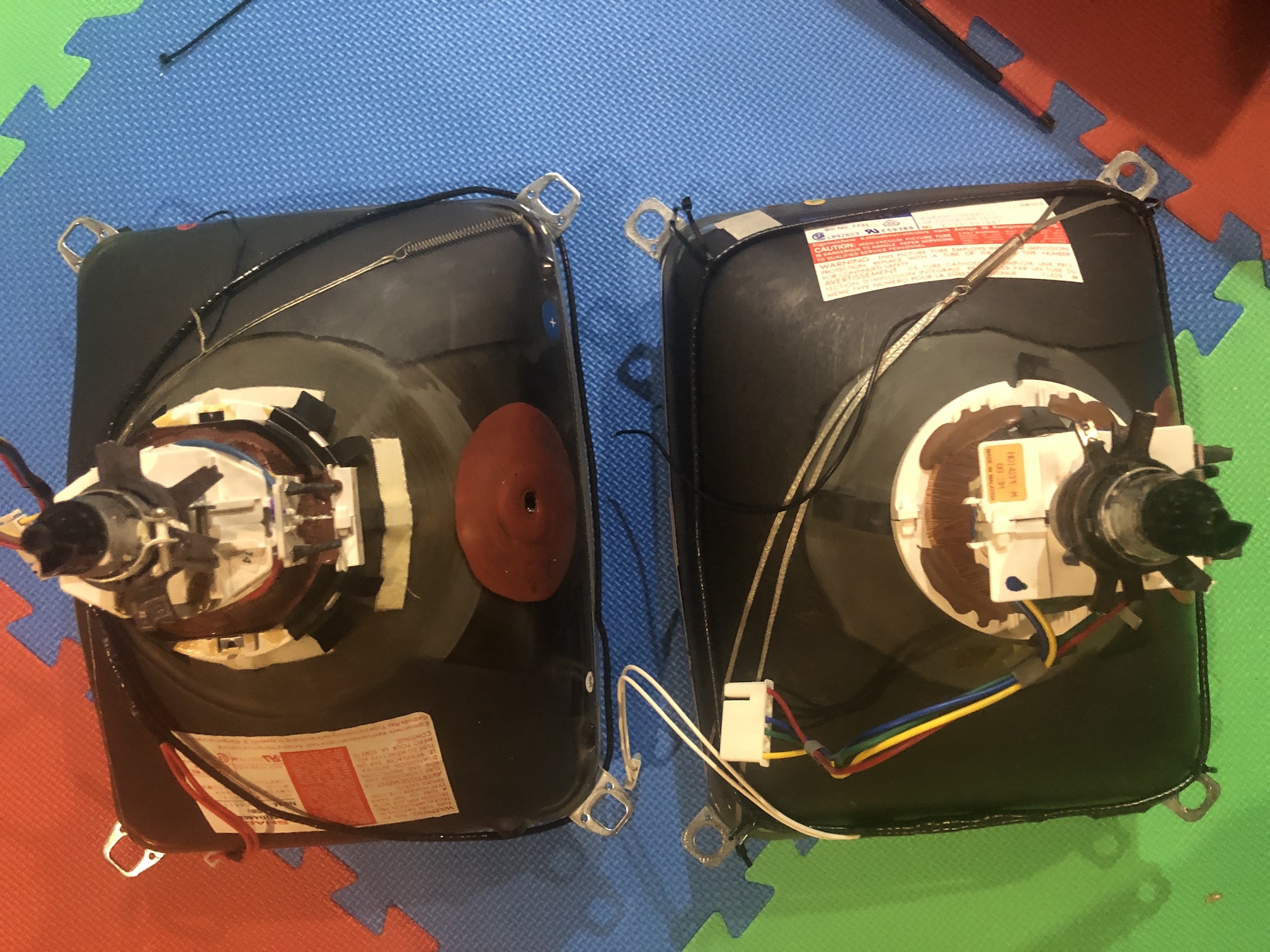
- I measured the yoke vertical and horizontal resistance using a standard multimeter. Gave few minutes for the reading to settle. Unfortunately, I didn't have an impedance meter.
- Toshiba 13A23, 34AGT13X98(L)) (Horiz: 6 ohm, Vert: 15 ohm)
- Sharp CJ13M10, 37GDA86X (Horiz: 6 ohm, Vert: 17 ohm)
Resistances were close enough.
Shape and size of the tube were compatible. It perfectly fit in each other chassis
Sockets were compatible, though I didn't check to see the heater voltage or if the pins were 1:1 compatible
Yoke was visually different with different connectors and pinout. There were 4 wires. Wires were compatible though some wires had different colors (i.e. Green/Brown wires were compatible).
Degauss coils were slightly different, though the connectors were compatible
Experiment 1
Swapping the tubes.
Since most of the items above checked off, I decided to swap the tubes with their respective yokes and hope for the best.
I first wanted to put the bad Sharp tube with the spare Toshiba board and see if they were compatible. This way if anything went wrong, either the bad tube will be damaged or the spare board will be damaged. I was ok with both outcomes, but was not ok with burning down my house. Therefore, prepared for the worst case outcome by doing this experiment in a safe place with easier/quicker access to shut down the power.
I was able to move the pins in the yoke connector from the Sharp CRT to match the Toshiba board.
Voila..! it worked on the first try. Colors were a bit dull - probably because the tube was a bit worn and flyback needed adjustement. Image was shrunk a bit vertically. But, it looked awesome for the very first try. The burn is mild and noticable in white screen, but for some reason it is not visible in the below picture.
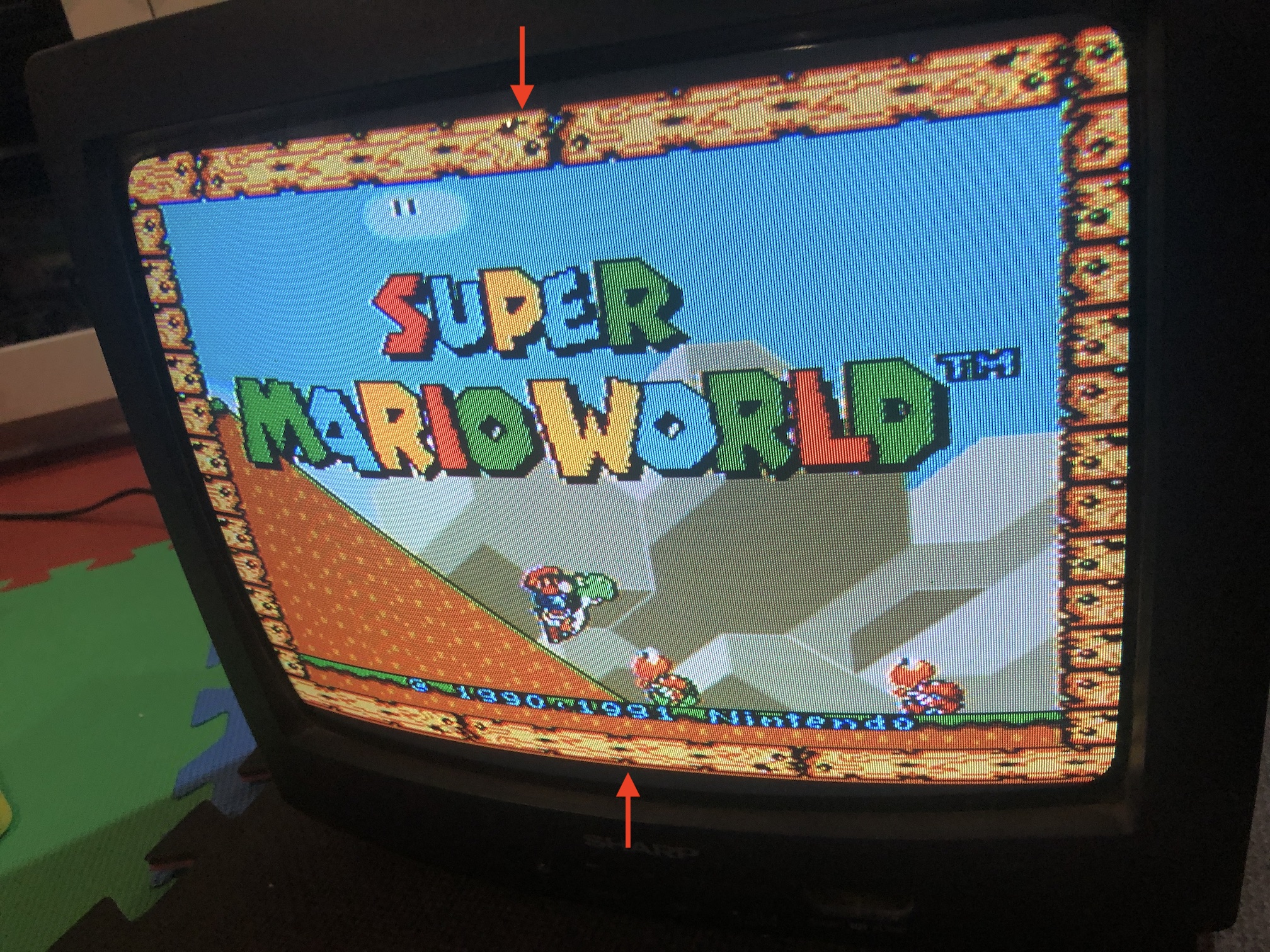
Experiment #2
Swap the yokes.
With this experiment I swapped the yokes. It was a bit of a pain, but I managed to loosen up both the deflection rings and yoke and swap the yokes and rings.
This way, my thinking was I didn't have to rewire the connectors. However, there was a slight problem.
Sharp tube with Toshiba yoke and Toshiba board was slightly shrunk horizontally and had several convergence issues
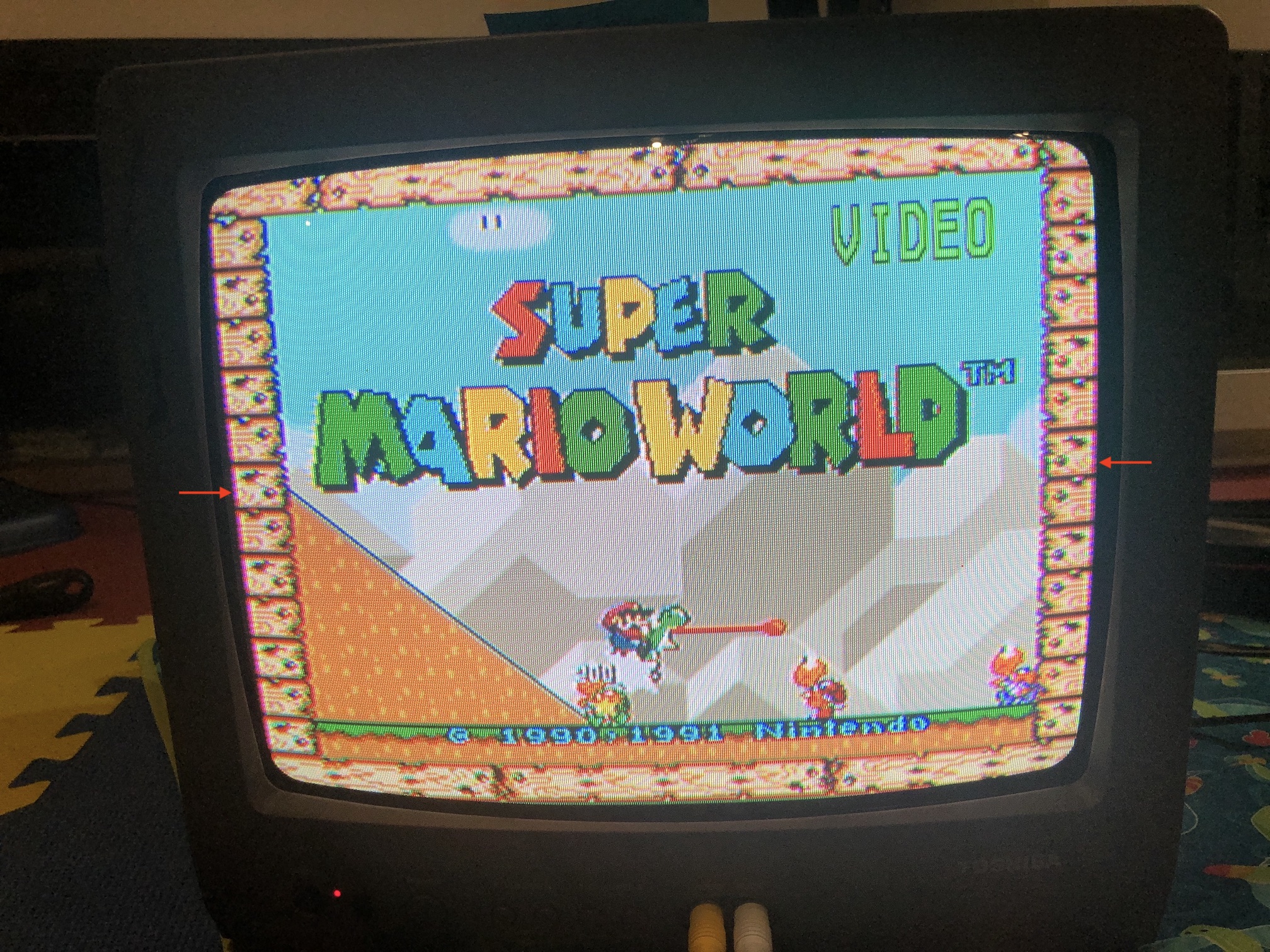
Toshiba/Orion tube with Sharp yoke and Sharp board was slightly expanded horizontally and had several convergence issues
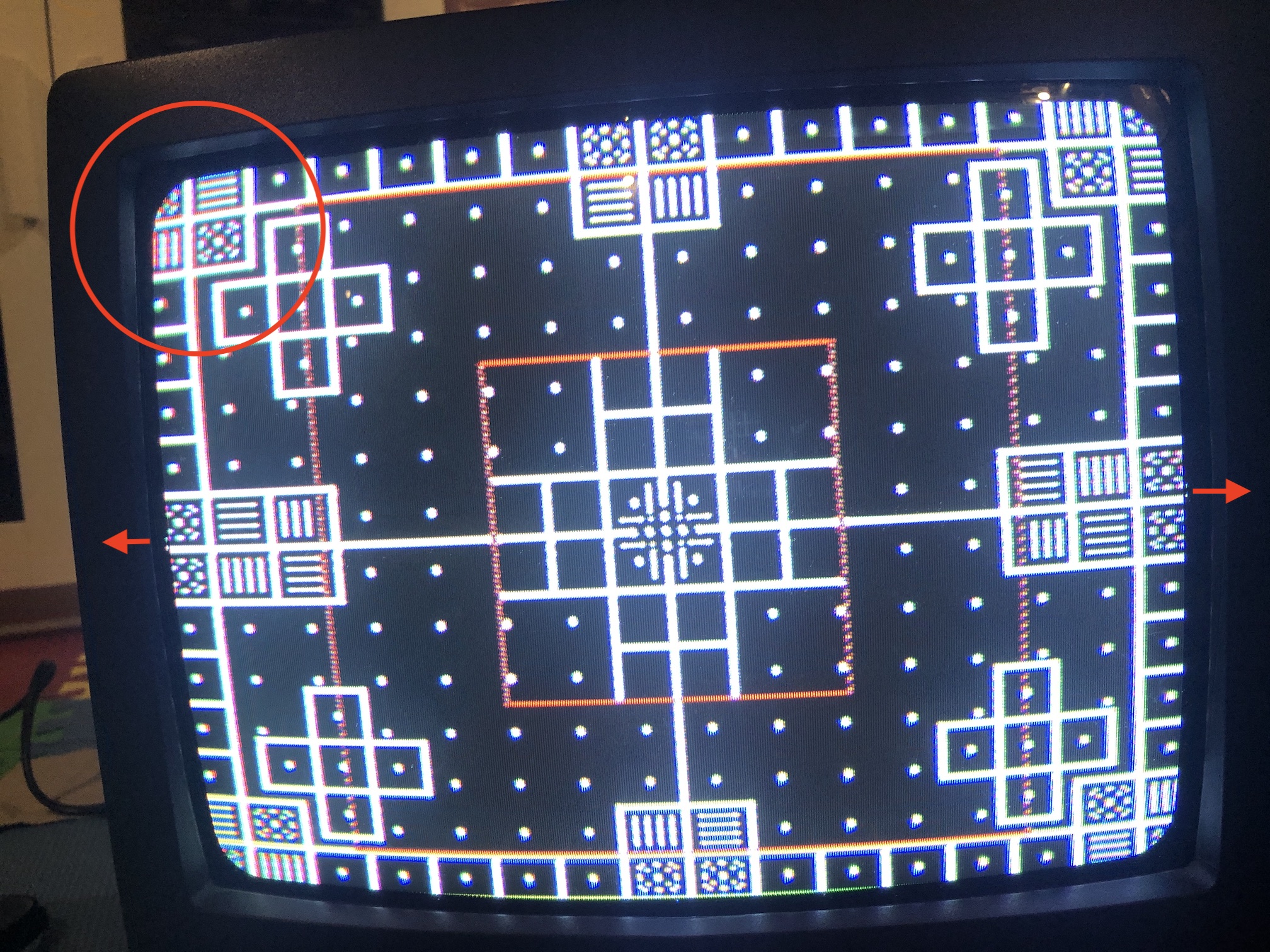
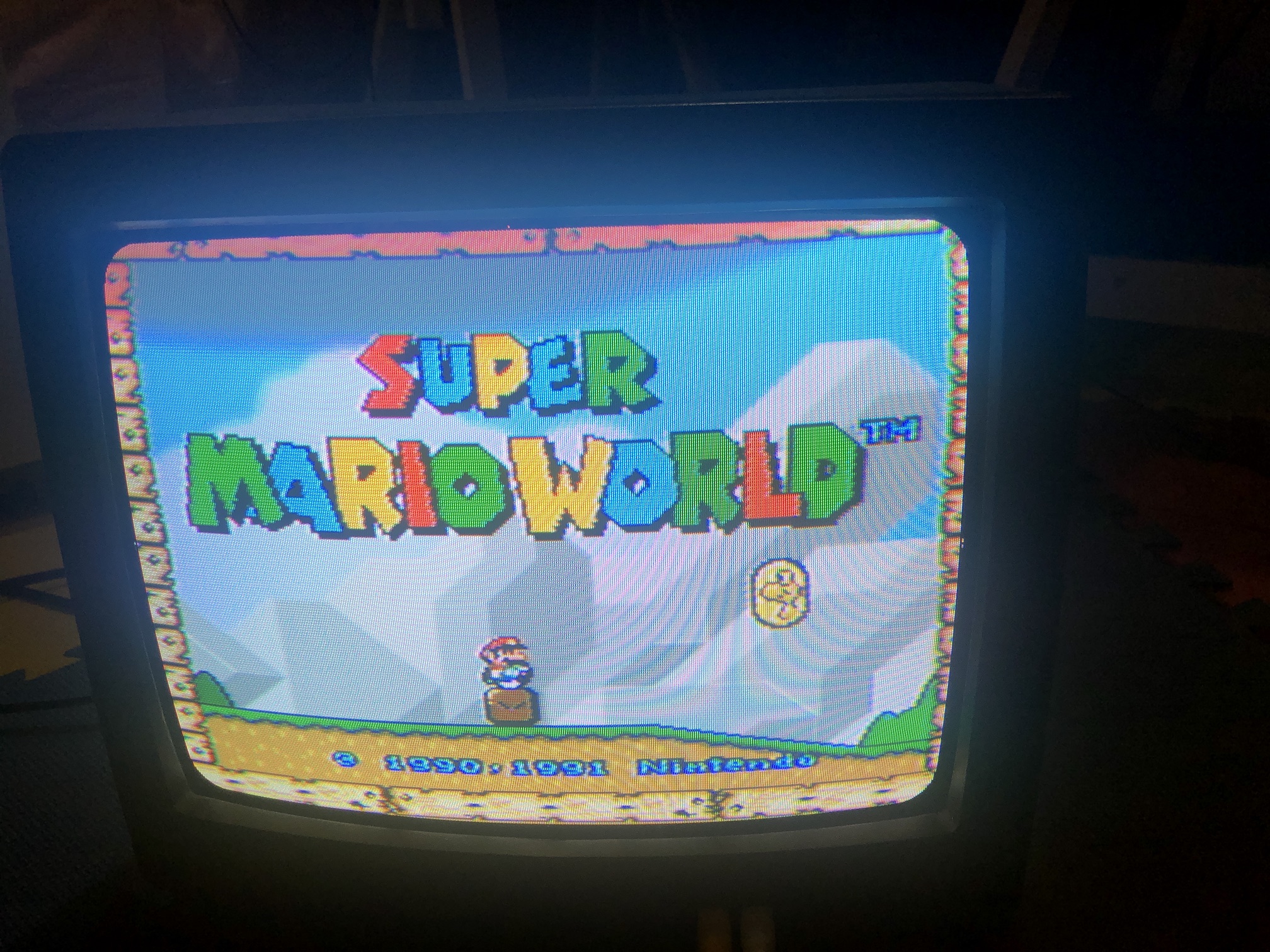
Since I wanted to save the Sharp CRT, I focused on it with the Orion tube and Sharp board. I was able to get the convergence to a pretty good state, but it was not perfect. For the horizontal size issue, there was no easy cure to shrink the image horizontally.
While the results were ok, it was far from acceptable.
Experiment #3
Keep the yokes the same, but rewire to match the connector.
I wanted the geometry and convergence to be really good. I decided to keep the tubes with their respective yokes. However, this meant I had to also rewire the connectors.
I soldered the yoke wires and the pins such that it matched the board. While it was a bit of a pain, it wasn't too bad at all.
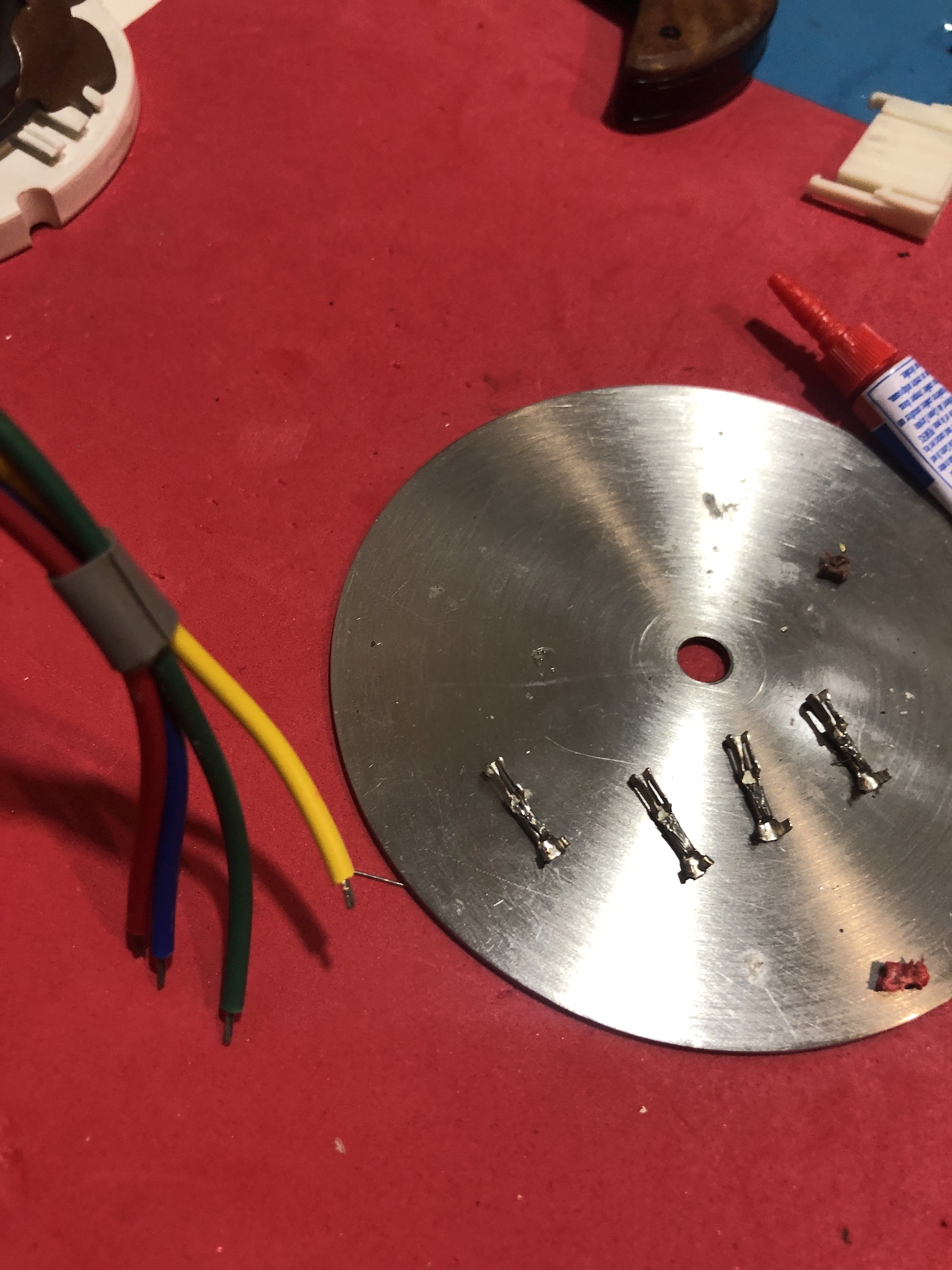
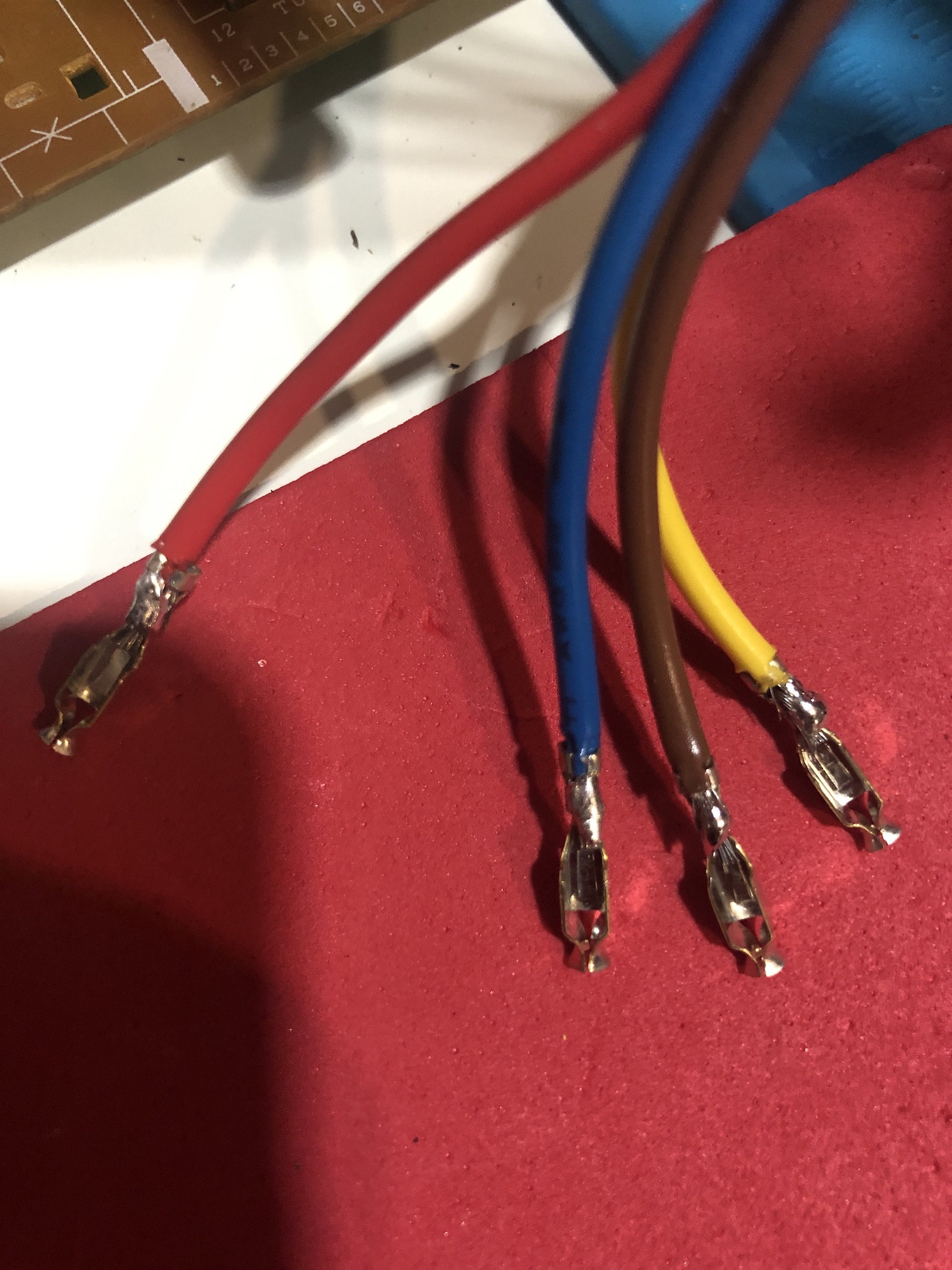
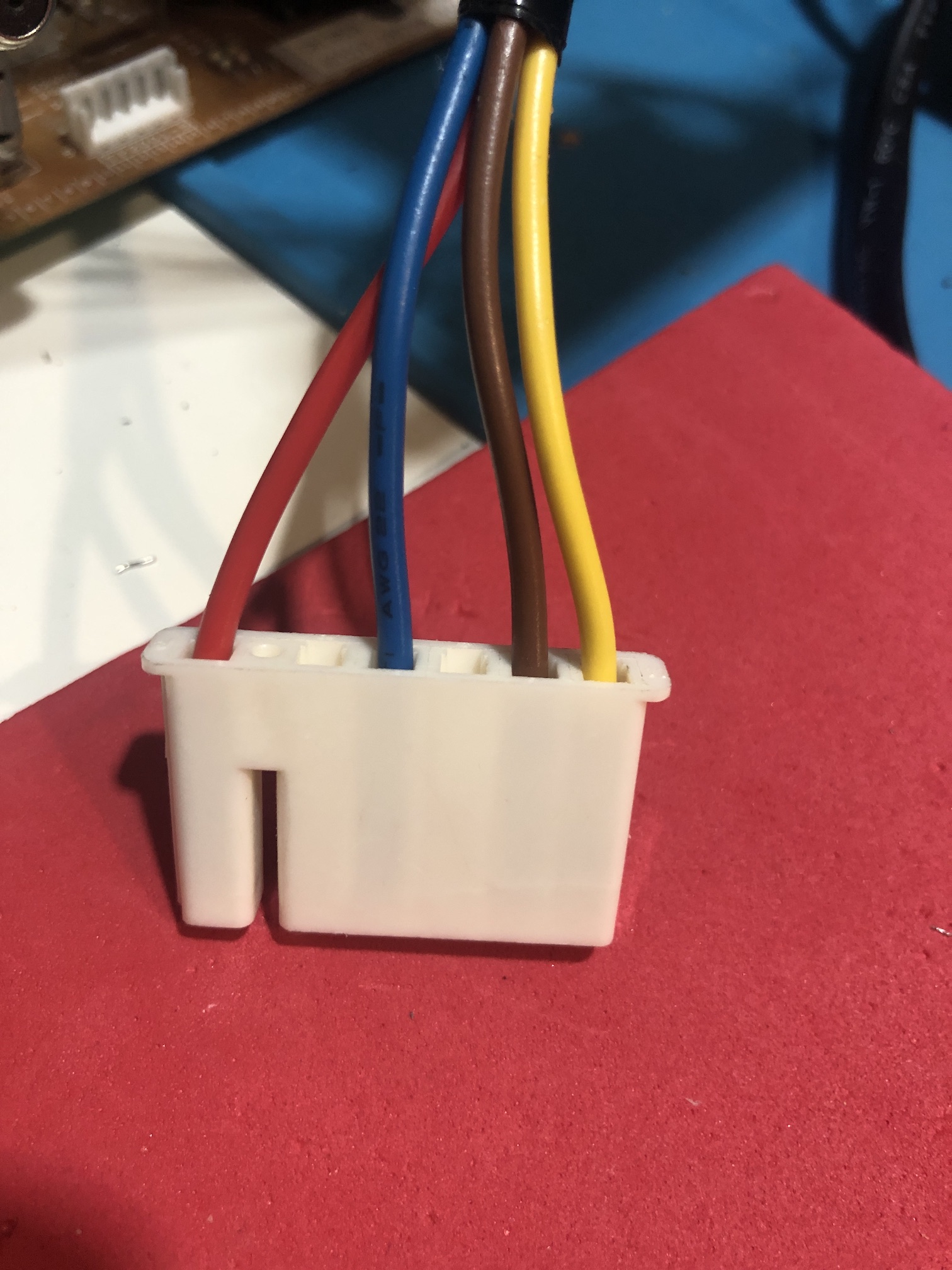
Powered on the CRT (once again taking the necessary precautions to ensure I didn't burn down my house). Horizontal size matched perfectly. I had to make minor tweaks on the Sharp CRT service menu to adjust the veritcal size, position and minor color adjustments. Results were really great for composite input! Both CRTs were saved in this experiment, including my house.
Sharp monoscope pattern with Orion tube 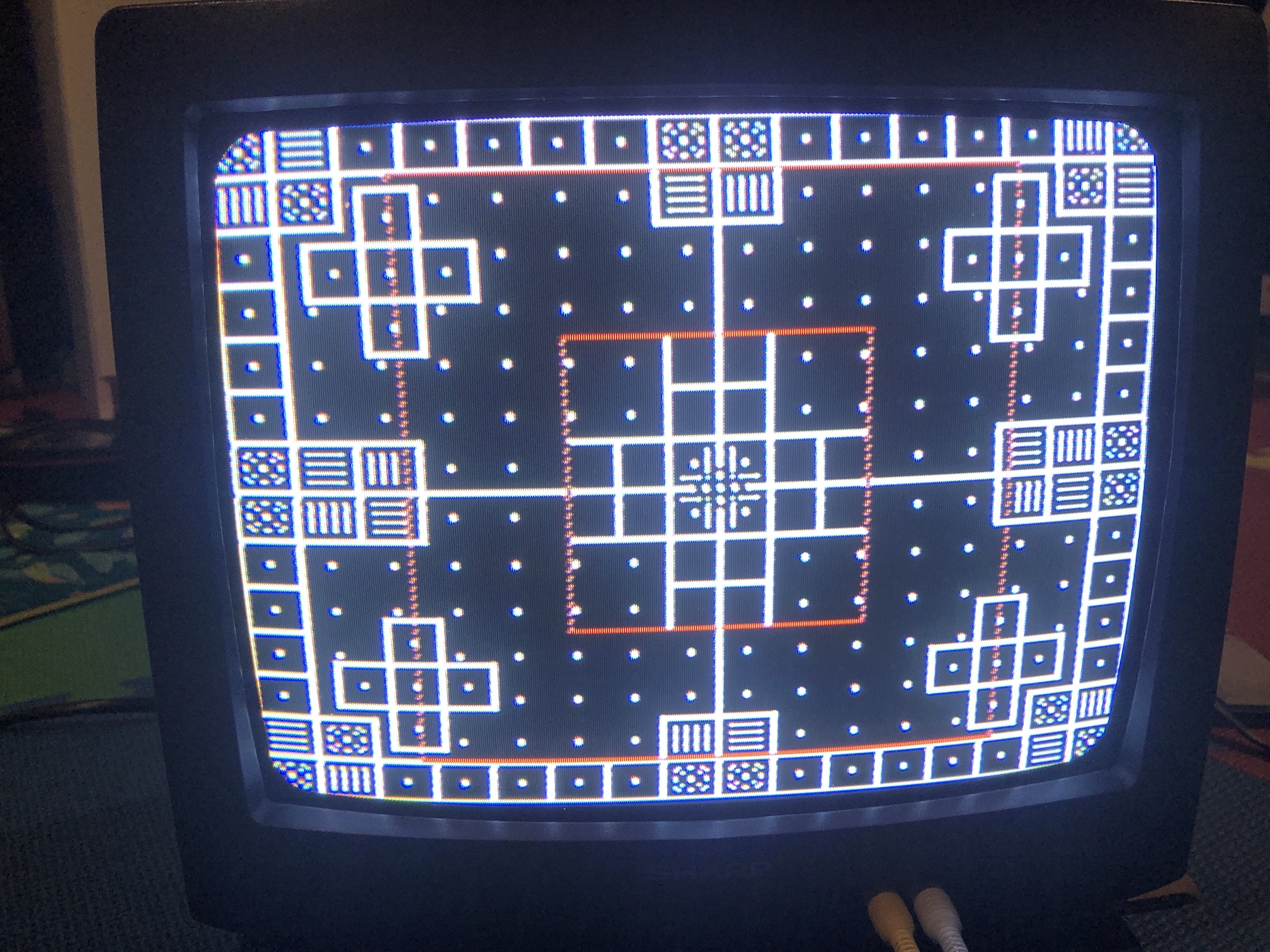
Sharp grid pattern with Orion tube 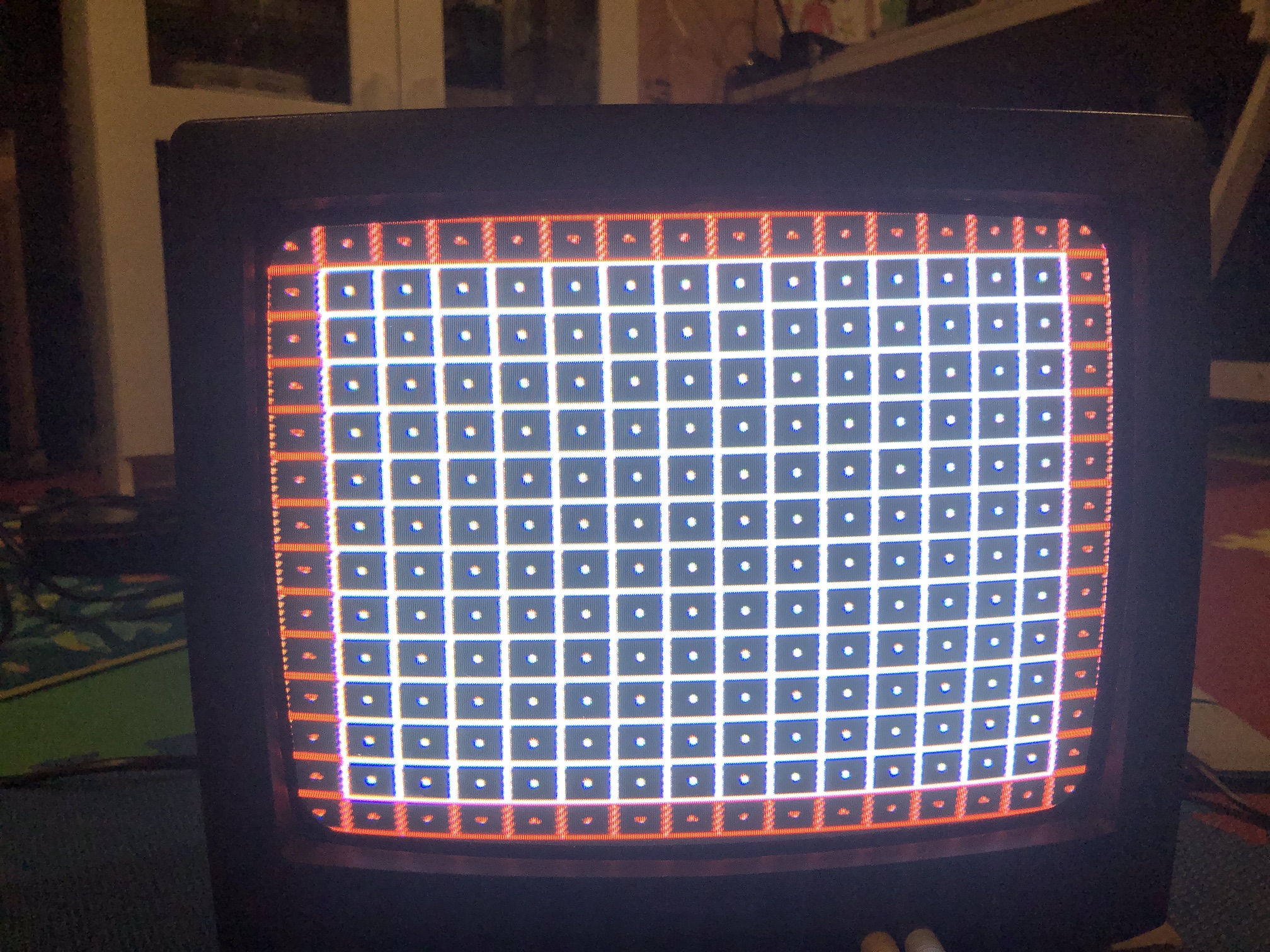
Toshiba grid pattern with Sharp tube 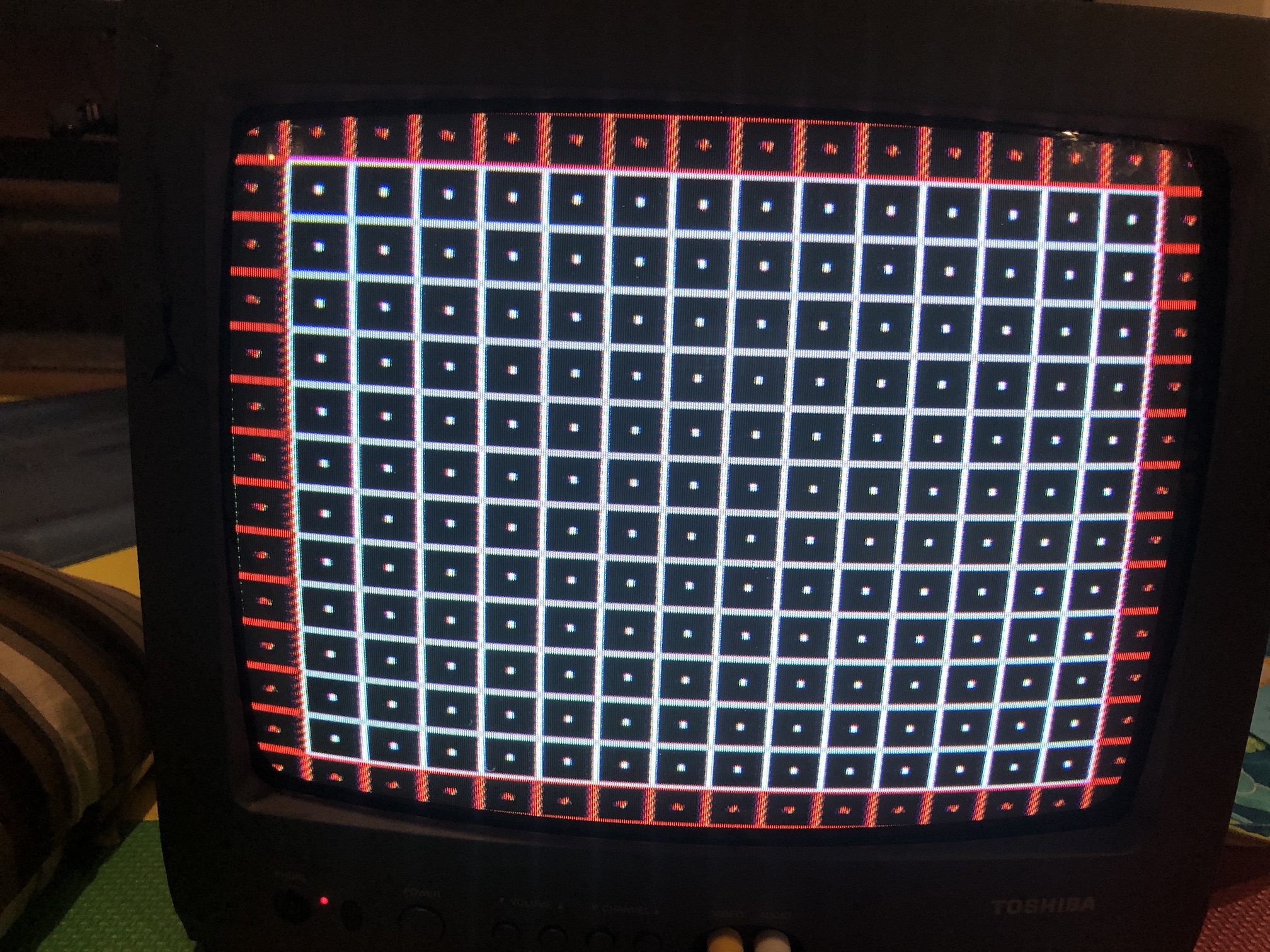
Toshiba Mega Man X with Sharp tube 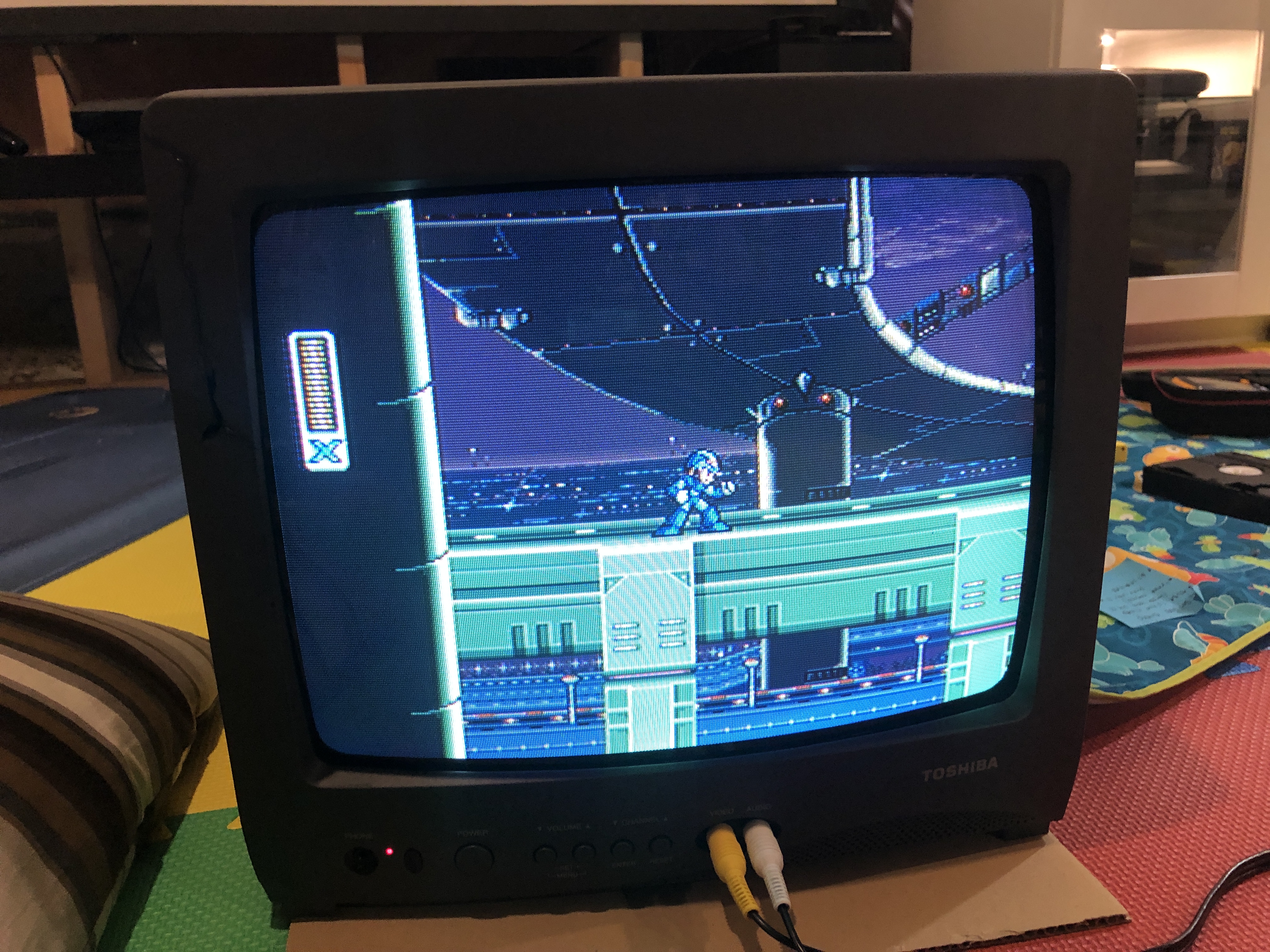
Next is to RGB mod this CRT and tweak it further.
Tubular for tube info
A great website for finding information on CRT tubes. tubular.atomized.org
13" tubes
A34JXV70X26
- Memorex MT1136 (A34JXV70X26 - Orion)
- Toshiba MD13Q11 (A34JXV70X73N45)
- Durabrand DCT1303R (A34JXV70X)
- Durabrand DBTV1300 (A34JXV70X)
A34JFQ90X
- JVC C-13810 (Toshiba A34JFQ90X)
- Memorex MT1130C (A34JFQ90X)
- Sharp 13N-M100 (A34JFQ90X)
A34LRQ90X
- Sharp 13N-M100
- Durabrand DCT1303R (A34LRQ90X(VW))
CPJ370BVBK1S
- Sharp 13N-M100
37GDA86X (swappable with A34AGT13X98(L))
- RCA/GE E13200 (Chassis TX825TC 370GDA86X, Horiz: 3.8 ohm, Vert: 14.4 ohm)
- Sharp 37GDA86X, Horiz: 6 ohm, Vert: 17 ohm)
37GDA85X
- Panasonic 37GDA85X (Horiz: 6.2ohm, Vert: 14 ohm)
A34AGT13X98(L)
- Toshiba MD13P1
- Toshiba MV13DN2C (VCR TV - Horiz: 6.0ohm, Vert: 15.2 ohm)
- Toshiba 13A21C (Horiz: 6.0 ohm, Vert: 15.2 ohm)
37SX110Y22-DC05
- Batman 13" CRT
20" tubes
A51LYZ095X - Flat tube
- Toshiba 24AF45
27" tubes
Swapping tubes of Toshiba 27AF43/27AFX54
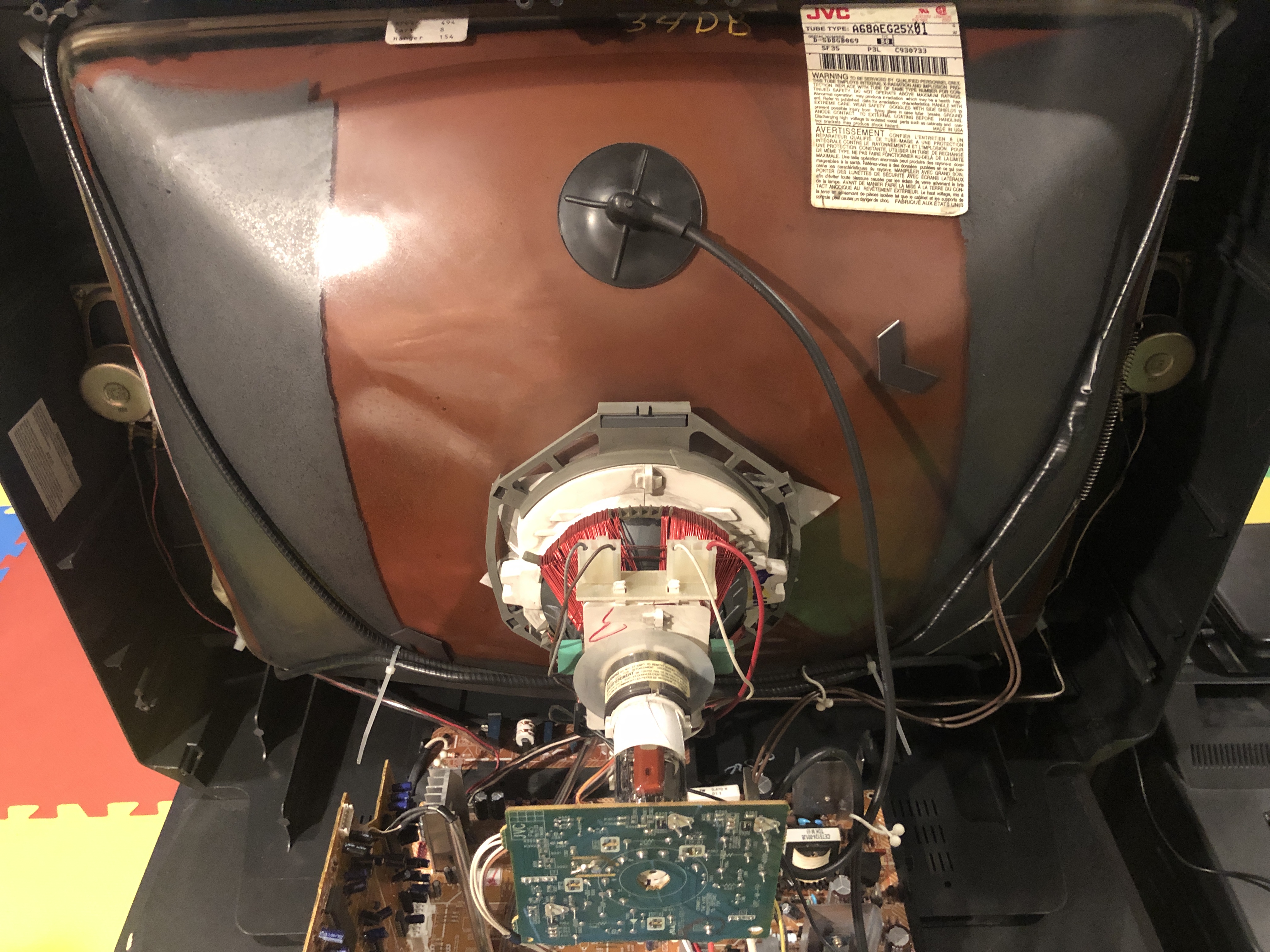
From the label, the tube used in this CRT, A68AEG25X01, is made in the USA. In addition, the tube, model number A68ADT25X01, was also used in many mid to late 1990s TVs from JVC, Samsung, Mitsubishi, and other brands.
Thomson A68ADT25X01 tube is also found in the below CRTs
- JVC AV-27230 (Serial number at the back ends in an R)
- JVC AV-27320
- JVC AV-27330
Please note other tubes can also be found in the above models.
A68KSA30X Hitachi 27" tube
32" tubes
A80LJF30X08
Decoding tube numbers
An illustration of how a monitor or TV picture tube designation can be broken down into 6 sections is as follows:
Example: A68JMT50X01 can broken down into 6 sections: A/68/JMT/50/X/01
The letter used at the beginning of the designation depends on the application of the tube. For computer monitor tubes, it starts with the letter "M" while for TV picture tubes, it starts with “A".
The number that follows represents the screen diagonal measure in centimeters (cm). For instance, a designation with "68" means the diagonal viewing measure is a minimum of 68cm which refers to a 27" tube. Other measurements include 36cm for a 15" tube, 41cm for a 17" tube, and so on.
The three letters that come after the screen diagonal measurement, such as "JMT", represent a family of tubes that have similar physical and electrical characteristics. These letters are assigned alphabetically, beginning with "AAA", followed by "AAB", "AAC", and so on.
The number following the family code shows a specific tube within the family code. A different number is assigned to tubes within the same family that have different neck diameters. For example, a single digit would represent a monochrome tube, but a two-digit number represents a color tube.
Fifth symbol gives the phosphor designation. For color picture tubes, the letter "X" corresponds to P22, while for other applications, color monitor tubes can have any other single letter (excluding I, O, or W) to designate other phosphor types. For monochrome pictures, the phosphor symbol is WW, corresponding to P4. Monochrome monitor tubes can also use WW or some other two-letter combination (excluding I and O).
Sixth symbol is assigned only for tubes having integral neck components, such as the deflection yoke. The specs only apply to a particular tube manufacturer, and the primary consideration here is winding inductance. The yoke coils have different sensitivity, i.e., deflection per Amp in both horizontal and vertical.
A68JMT50X (Sony 2780R) A68LML50X (Sony 27S42)
